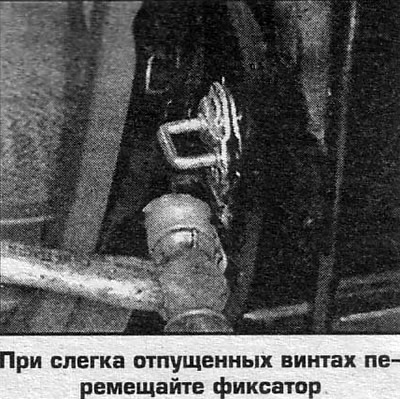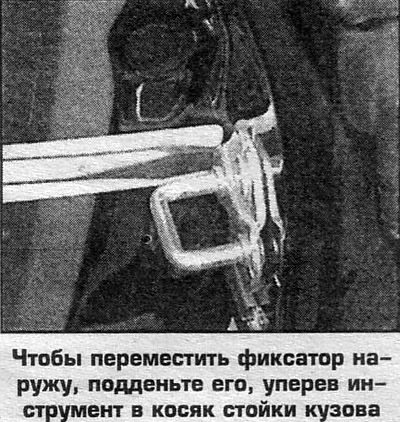In addition, when closing, the door must rest against the seals to ensure the tightness of the interior, the seal must be compressed by half along the entire contour of the doorway. The main adjustment of the door is provided by bolts securing the hinges to the body. The door is moving (do it with a helper) with loosened hinge bolts. Adjustment of the door in depth is provided by moving the door with the bolts that fasten the hinges to the door released. This ensures that the pressure on the seal is regulated. The front edge of the door should be slightly lower (or not higher) adjacent body panel. The trailing edge of the door should be just below the adjacent body panel. The final adjustment of the door is achieved by moving the latch of the door latch (attached to the body pillar) in the following way.
1. Use an impact screwdriver to loosen the retainer fixing screws.
2. Move the outer handle to the position corresponding to the opening of the door and close the door - in this case, the latch will take the position corresponding to the correct position of the slammed door.
3. Open the door and tighten the screws, the latch can be moved in or out, but you must repeat the door adjustment by loosening the hinge bolts. On the part of the car, under the latch or under the hinges, adjusting shims are laid, which provide additional adjustment.
Attention! It is forbidden to adjust the door in height by moving the latch vertically.
4. When finished, check that the door is closed. The door must close without vertical movement. Re-adjust if necessary (it may even be necessary to move the hinged door a little). An insufficiently accurate adjustment of the latch is indicated by a slight metallic knock when the door is slammed.
 |  |
 |  |
